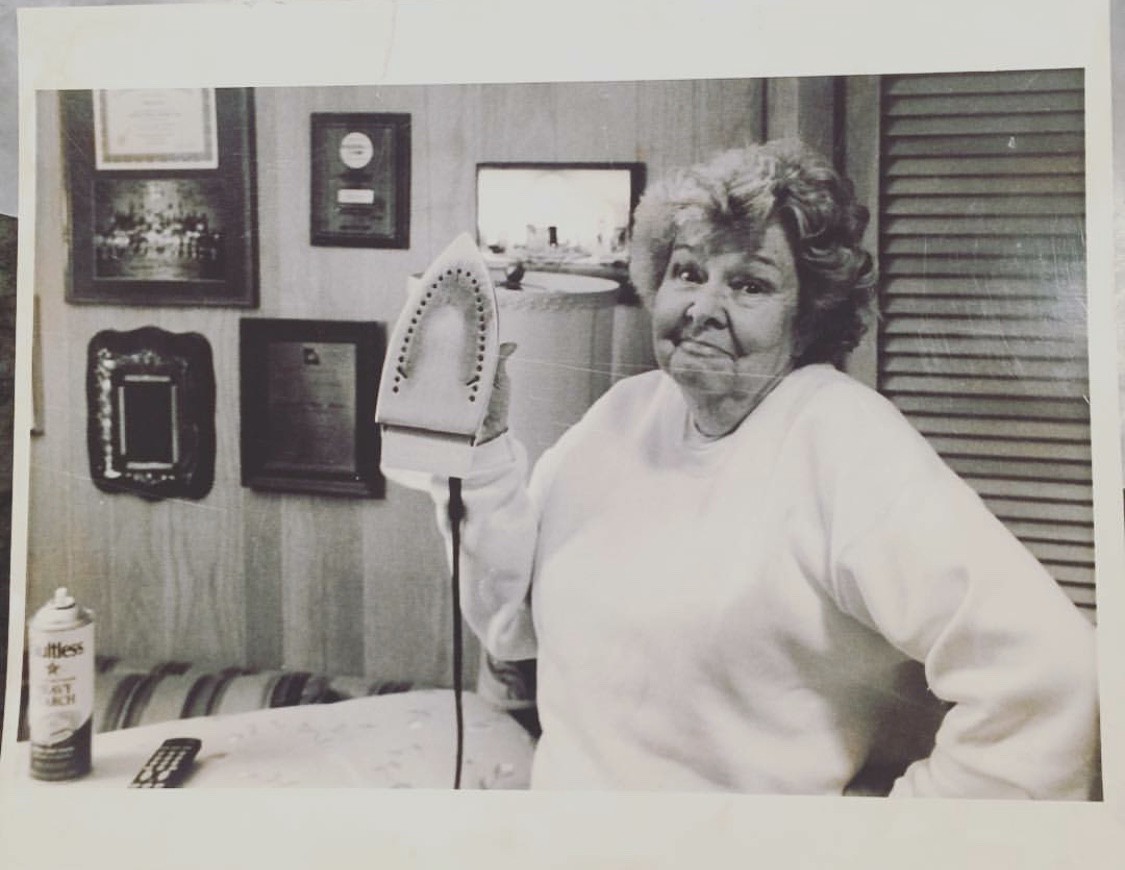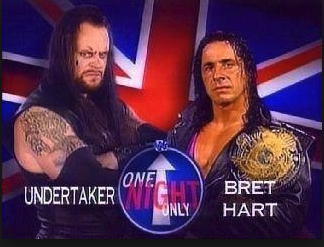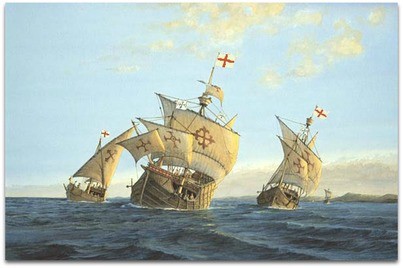“Discovery is seeing what everybody else has seen, and thinking what nobody else has thought.”
~Albert Szent-Gyorgyi, Biochemist
There are no pre-planned instructions for your future. You have to write it yourself.
Let me tell you how I know this.
My Dad use to buy me model cars as a kid. We called them “models”. We would lay on the floor of what we called “The Newroom” in our house in Missouri and I would hold the instruction manual and watch him go step by step.
Dad would say: “What’s step 5 say?”
I would carefully glare at the step 5 photo trying to make sense of why we attached the tires before the main frame, then I’d read what was on the page and / or show him. Step by step we snipped, snapped, painted, while WWF played in the background. And before you knew it we had a model car. I was so excited.
I think Dad ended up putting them together more than I did.
I was too distracted watching The Undertaker fight Bret “The Hitman” Hart.
But nonetheless we had a nice collection. We were so proud of our collection. I kept them on my shelves in my room.
This all got me thinking. Often times I wish the future had an instruction manual like our model cars.The one thing the model cars taught me is that while some things have instruction manuals many (if not most) things in life do not.
Especially when it comes to innovation and progress.
In fact, much of what’s in the future we don’t see until it suddenly arrives at our doorstep.
Upon more thought I was reminded of the interesting “Ships Not Seen” myth and how when Christopher Columbus (1492), Ferdinand Magellan (1520), and James Cook (1770) arrived off the coast of North and South America and Australia that the Native Americans completely ignored them supposedly because Ships were something they’d never seen before. It was something beyond their reasoning, logic, and understanding. It was a new idea. Something they couldn’t even begin to comprehend. They therefore didn’t even “see” the ships. Were the natives ignoring them or could they really not “see” them?
Joseph Banks a botanist aboard Cook’s ship in one account said:
“The ship passed within a quarter of a mile of them and yet they scarce lifted their eyes from their employment; I was almost inclined to think that attentive to their business and deafened by the noise of the surf they neither saw nor heard her go past them. Not one was once observed to stop and look towards the ship; they pursued their way in all appearance entirely unmoved by the neighborhood of so remarkable an object as a ship must necessarily be to people who have never seen one.”
Whether the myth is true or not, I don’t know. There’s been speculation on both sides of the equation. But if it were true, it wouldn’t surprise me.
My main reason being we didn’t “see” the iPhone in 1995 but we had the tools to make it. Everything that has ever been and that will be is already here. We just haven’t discovered it yet. America was always there. It’s just that nobody just had set sail across the Atlantic to find it. But this very myth is a great metaphor not just for advancements and progress in modern technology but in life as a whole. It was something they hadn’t seen before. It was a new invention. It was a new “Recipe”.
“Talent hits a target no one else can hit; Genius hits a target no one else can see.” ~ Arthur Schopenhauer, Philosopher
Let’s look at another example. In a 1994 video Bryant Gumbel and Katie Couric tried desperately to figure out what the “@” symbol means and what “Email” and “Internet” is.
Ok so, if these anchors just less than 25 years ago could not figure out and in a sense could not “see” the concept of internet and email isn’t it perfectly feasible that the Natives could not “see” nor understand the concept of these massive ships?
Certainly the Natives had canoes and perhaps smaller ships. We also know that Gumbel and Couric had electricity and the US Postal service. But it’s when different platforms, ideas, or objects are combined and / or meshed together that ideas are generated, inventions are created, trends take off, brands originate, stars are born, or progress accelerates. Sometimes you have to mix and match quite a bit too! A great example of someone who liked to try different mixes and learn from trial by error was Thomas Edison.
“I have not failed. I have just found 10,000 things that do not work.” ~ Thomas Edison, Inventor
Author Andrew Hargadon references this term I love “Technology Brokers” in his brilliant book “How Breakthroughs Happen”. He writes:
One such truth in the secrets of {Thomas} Edison and others are not to be found in their solitary genius and capacity for invention. Instead, Edison, like his modern counterparts, was capable of creating one breakthrough after another because his organization was built around technology brokering, a strategy for exploiting the networked nature of the innovation process. Rather than producing fundamentally novel advances in any one technology or dominating any one industry, technology brokering involved combining existing objects, ideas, and people in ways that, nevertheless, spark technological revolutions.
Technology brokering. Very interesting. The term reminds me of a hobby / skill many love:
Cooking.
We need to pay more attention to cooking when trying to think about the next big thing. The reason being is if you ask any chef they’ll tell you the recipes for different types of food are endless. There’s an infinite amount of combinations in how one cooks things
I look at my grandmother Nana’s cooking. Nana was some world renowned cook (at least in Saint Louis). In fact, she had this recipe book that became famous throughout the south. But the reason it was famous is because Nana understood something profound. She was a cooking innovator. She was the Thomas Edison of cooking. She was always mixing and matching ingredients to give her meals and foods a unique taste to them. If you can believe it she once cooked fried chicken for the Rolling Stones when they visited Saint Louis. Someone asked what they wanted to eat and they said the best fried chicken in town. Nana was immediately summoned.

How did Nana innovate? Well one example is she put bacon in the green beans while they cooked. Now this is done throughout the south. But the origins of it are in Nana’s genes. She did things that were outside the box in traditional cooking. The people that do this in any form of art, science, technological, medical, or creative endeavor are those that give birth to progress.
We see people crossing platforms all the time these days. United States President Donald Trump is a good example. Many are dumbfounded as to how a businessman / real estate man like Trump could overtake former First Lady, Senator, and Secretary of State Hillary Clinton and win the Presidency. Well, Trump’s win reminds me of an old joke about outrunning a bear.
“A bear jumps out of a bush and starts chasing two hikers. They both start running for their lives, but then one of them stops to put on his running shoes.
His friends says, “What are you doing? You can’t outrun a bear!”
His friend replies, “I don’t have to outrun the bear; I only have to outrun you!””
In fact, Hargadon also references the bear joke. He writes:
Nolan Bushnell had it half right-life’s interesting on the steep part of the learning curve. But not many people will pay you to simply struggle along there. Technology brokering isn’t about moving into worlds you know little about. It’s about finding worlds you know little about but where your own knowledge looks more valuable…Bridging to your strength means moving into worlds where your past experiences will be valuable contributions, where you are a visitor bearing gifts.
Donald Trump and Steve Jobs are technology brokers (Trump in politics and business, but still). While it’s a good metaphor for Trump’s mode of operation it also is on to something as to how Trump won. All he had to do was beat out the competition within that field. Steve Jobs did this very same thing with computers when nobody thought to make computers user-friendly, simplistic, and cool.
It comes as no surprise therefore that a wide variety of inventions happened by accident. People mixing, matching, and technology brokering often leads to some startling discoveries. A starter list of unsuspected inventions would be the microwave, a slinky, play-doh, super glue, Teflon, the pacemaker, Velcro, and the X-Ray.
In closure I’d say don’t be afraid to try new things. Cross between careers, and industries. Read, learn, adapt, change. Mix and match. And damnit, put Bacon in the green beans.
Everything that is in the future is already here. We just can’t yet see the ships because we haven’t found the right combination of ingredients. The future doesn’t come with a model car instruction manual. We have to create our own.
“Twenty years from now you will be more disappointed by the things you didn’t do than by the ones you did do. So throw off the bowlines. Sail away from the safe harbor. Catch the trade winds in your sails. Explore. Dream. Discover.” ~Mark Twain, Writer
By Geoff Pilkington
You can connect with me on my website at www.geoffreypilkington.com

Originally published at medium.com




